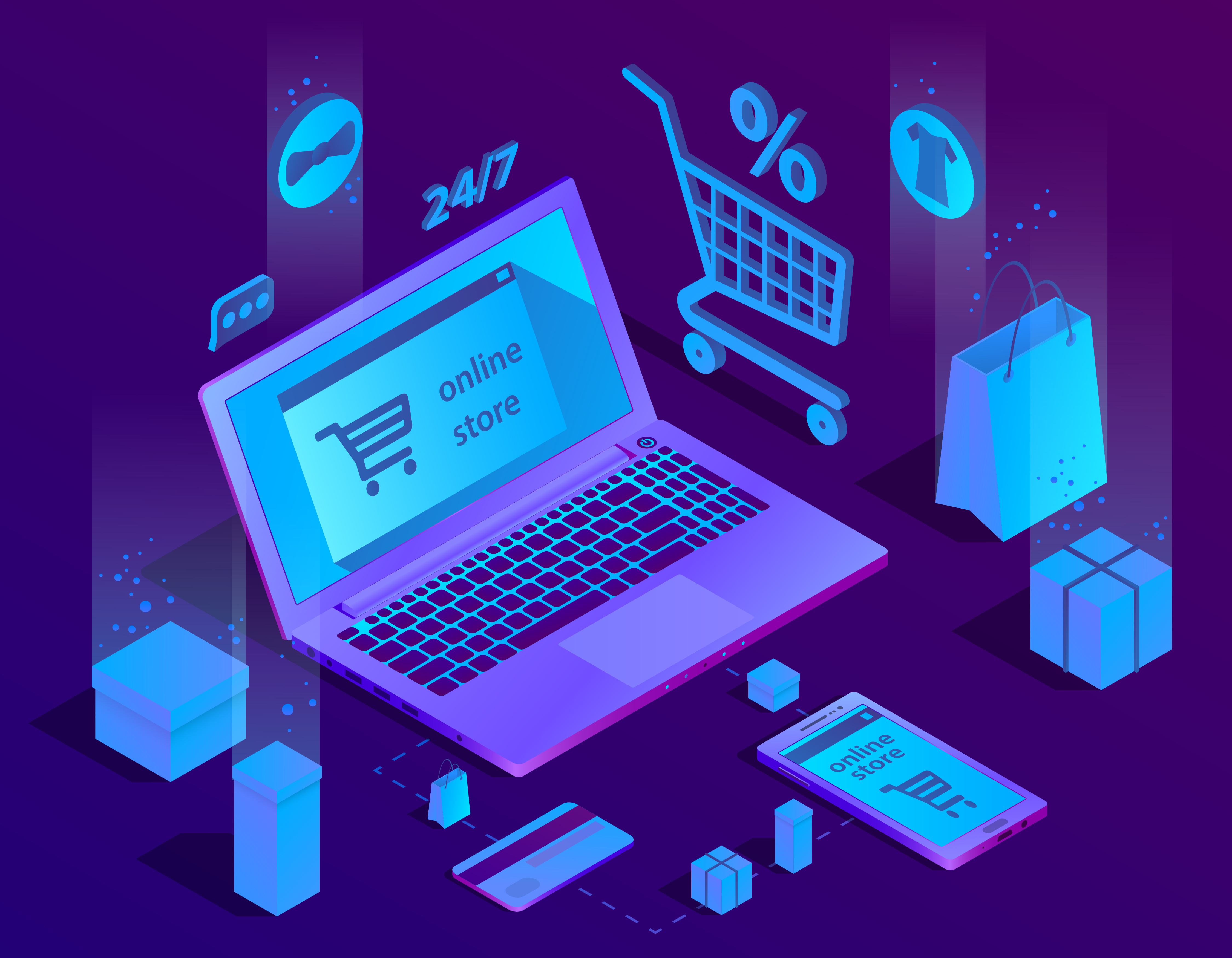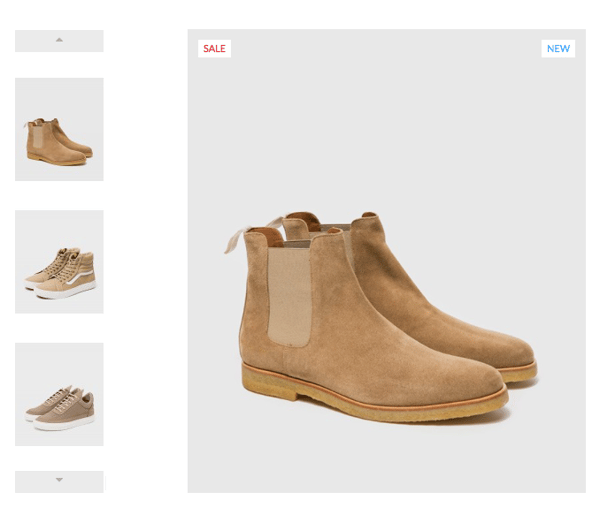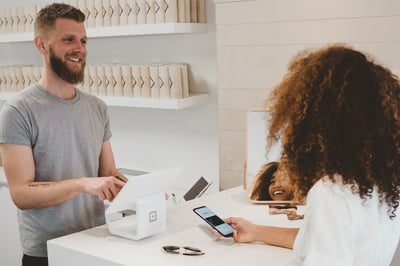
Both dating and shopping make us want to feel special.
We want our needs heard and preferences taken into account, but this can only be done if the other party involved is attentive to our needs. Can you translate this idea into online shopping?
If you’re the owner of an online store and want a rock-solid relationship with your customers, read on to find out about the power of personalization, artificial intelligence, and of course, love.
Apparently it happens, but you have a much better chance if you're a character from a romantic comedy. When it comes to looking for a partner in real life, there is a specific order of things. Even during such mundane activities as shopping.
Human nature tends to analyze the pros and cons of every situation, and, sometimes, you may feel the need to look into other options. At the beginning, it’s natural that you go through many stages of a relationship to determine if the candidate is right for you. A customer’s relationship with a brand is very similar.
Every experience that takes place affects the emotional perception of a given brand by the client and influences the degree of their involvement. Let’s take a look at different stages of a relationship and how to make your date with the customer successful.
Your blind date starts when a new, unidentified person appears in your online store. You are strangers to each other, so you want to learn about your date as much as possible. It won’t be easy, but, believe me, this effort will pay off.
In human dating, you usually ask for a name first, but this is a little different in the world of customer data. At the beginning, try to get basic information: how your guest found you and where they came to your site from. Use a variety of parameters and analytics for this. Perhaps the customer comes from another country and uses a different language? Use geotargeting and customize the message in terms of different language versions.
Now that you know what you can find out by yourself, it’s time to ask for more personal data, including name, email, or phone number. You can get that information by using a contact form, for an example. Persuade your customers to introduce themselves by offering an incentive in return for. This could be a discount on their first purchase or something similar.
During the next "dates" with your client, you can use the fact that you know their name by putting it in emails and on the store's website (for example, on the login bar). This is just the kind of personal touch that your date will notice.
However, be careful not to fall into the trap of clichéd or false personalization — avoid the phrase, "Specially for You," if you're not connecting it with an actual dedicated offer.
A smash hit by The Police should be your inspiration — watch your client closely (without getting creepy, though). Just like you pick up bits of information about a date while you chat, you can capture information about your potential client by:
All these elements will allow you to get to know the preferences and tastes of your guest.
In this task, a very helpful tool can be a recommendation engine that uses machine learning algorithms for the sake of predictive analytics. Based on the data gathered, it can develop so-called predictive product recommendations. This opens the door to further deepening your new relationship.
|
TIP: Find the easiest-to-use predictive analytics software to get started! |
There are many standalone tools, as well as e-commerce store add-on tools that help e-commerce sites with their customer analytics and online marketplaces.
It is true that during a date you can't read your partner's thoughts. However, you may be able to predict the thoughts of your customers when they shop in your store. While your guest browses certain products, AI analyzes them visually. It then chooses from the product catalog articles that are visually as close as possible to the original.

Imagine that the customer browses a blue top. Perhaps they will be interested in a sweater in the same shade? Personalize online product recommendations in real time by identifying colors, designs, and patterns that interest your customers and show them exactly what they are likely to buy.
Our date is getting better and better. You have sufficiently interested the customer with your brand and offer. They decide to add a product to the cart. This is your opportunity to further demonstrate how you can adapt to their tastes in real time through the use of AI.
Based on the characteristics and specifications assigned to the product from the cart, the algorithms can offer your customers substitutes and complementary products in real time. If your guest wants to buy designer shoes, maybe they will be interested in socks with a crazy pattern or laces in a bold color?
An additional option can also be cart recommendations. This is a function that involves suggesting products that may potentially interest the consumer, and can give the customer, for example, free shipping if they are added to the cart.
|
Related: Read about AI marketing today to see innovative ways artificial intelligence is used to help customers make better buying decisions. |
A pivotal point in your "date" has come. The customer has to decide if they want to take one step further and place an order or abandon their shopping cart. If you have used the appropriate level of personalization, you have a good chance of finalizing the deal. However, your efforts do not end there. The next stages of the transaction should also include elements of the individual character of your relationship.
For example, you can give a unique and creative name order. Have you ever seen those emails with "Order No. 321890 has been sent" as the subject? Don’t let the customer feel like an ordinary number.
To get more data about customer satisfaction, send them a request for feedback after the order has been received. This will allow you to improve any problem areas in the transaction process and optimize every stage throughout the customer journey.
So now you’ve broken the ice, got to know each other a bit and experienced your first joint adventure, which was to successfully complete the order. Now is the time to consolidate this relationship.
Some user preferences should already be registered in your system, so why not use them right away? Apply dynamic recommendations, for example, in the form of banners. If during previous purchases your client bought a given product, suggest complementary items or other products that have been frequently bought together by other customers.
Some companies use dynamic pricing and AI algorithms that can analyze a customer's purchase history and determine the individual discount on that basis.
An attractive solution that promotes personalization is the ability to create wishlists.
Give your customers the option of storing the goods they would like to have, but can't buy at the moment. An interesting option is also the possibility of publishing a wishlist. Thanks to this feature, relatives and friends of your client can easily choose the perfect gift.
Source: (indiesew.com)
Wishlists can make everyone’s lives easier. Use wishlist insights in customer communication by reminding the customer about the stored items, suggesting complementary products, and informing them about planned promotions. Put the content of the wishlists in emails and dynamic banners.
It may turn out that visitors to your site will not be ready to continue this "relationship" and will abandon the products that they placed in the shopping cart. This does not mean that all hope is lost and you’ll never see each other again.
If the customer has agreed to receive push messages or emails, you can send reminders about the abandoned shopping cart. Perhaps they will soon find your offer attractive enough and return to your store.
If it turns out that your product doesn't fit the customer’s expectations after it arrives, and they want to return it, exchange it, or make a complaint, don’t worry. Though unpleasant, this situation may become a positive experience. You have an opportunity to show the human face of your brand and its strengths, including its openness to customer problems and support.
Customer satisfaction with the purchased product does not translate directly into loyalty. Without additional incentives and a thought-out strategy of building a permanent, personalized relationship with the client, its acquisition will be unprofitable. Take care of your relationship with lead nurturing.
Remember the contact form mentioned at the beginning? If the customer had the opportunity to sign up for a newsletter during their first visit to your site, use it to send personalized messages about promotions, sales, or other events that could be of interest.
Time sensitivity, combined with a properly prepared message, has the best chance of achieving the desired effect, which is to encourage the client to return frequently. Even the most interesting promotion won’t bring the expected results if it doesn’t arrive when the customer is potentially interested in an offer.
A relationship between two people begins with gestures, not words. The same is true in business. Only well-planned, regular customer engagement in personalized shopping processes can turn into a strong relationship.
Customers want to feel special. Being aware of simple variables can determine whether you will carry out a successful campaign or a badly targeted promotion. What you need is behavioral data that uncovers customers’ interests and preferences. In their analysis, it is worth using machine learning technologies and predictive analytics.
Are you curious how machine learning software can help you amplify your e-commerce marketplace? Search the highest-rated machine learning technologies on the market today!
Inga Leder is a graduate of European Diplomacy at the University of Wrocław and Advertising Management at the Jagiellonian University. At Synerise, she is responsible for communication activities in social media, supporting the marketing team in PR activities, research and expert content creation.
Her professional interests are content marketing and social media marketing. She is also passionate about psychology in marketing.
In today's consumer-driven market, the modern customer demands personalized experiences that...
 by Pulkit Jain
by Pulkit Jain
You already know customer engagement is more than a buzzword. It’s the difference between...
 by Evelina Milenova
by Evelina Milenova
Have you ever received an email mentioning that one thing you’ve been seeking for weeks? You...
 by Martina Ďurišinová
by Martina Ďurišinová
In today's consumer-driven market, the modern customer demands personalized experiences that...
 by Pulkit Jain
by Pulkit Jain
You already know customer engagement is more than a buzzword. It’s the difference between...
 by Evelina Milenova
by Evelina Milenova


